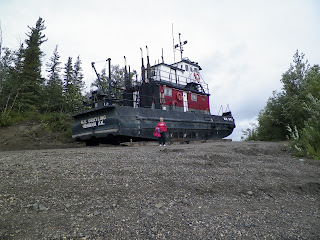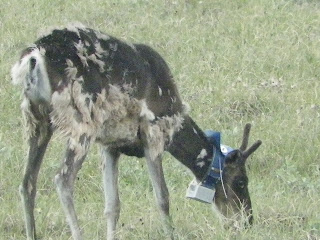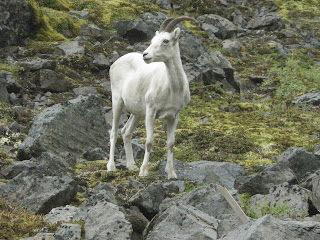Second Day to Deadhorse
We got up early on
Tuesday morning for the trip to Deadhorse. Breakfast started at 5:00
AM, remember this is a work camp. We traveled the short distance to
Wiseman for a tour given by a local named Jack. Jack is a year round
resident with a wife and a child on the way. He has grown children
that has moved to Anchorage.
Living north of the
Arctic Circle requires one to be resourceful. His house is equipped
with the same stuff we have on offshore sail boats. Solar cells, wind
chargers, battery banks, inverter and generator. The Generator needs
to be heated prior to starting on cold days, down to -40 degrees and
at times -80 degrees, and then placed in a box to heat the air as it
is pulled into the generator. The solar is good in the summer when
the sun never sets with the wind generator working on windy days. The
house is a small house to keep energy demands down. The refrigerator,
or cold storage, is a hole cut into the floor with hatch type
access. It never gets above 40 degrees, even in the summer time.
Heating and cooking is accomplished with wood as the cost of fuel oil
is over $3,000 a winter. He spends 3 months splinting wood for the
nine months of winter.
Jack is also a
trapper/hunter and traps and hunts all winter for income and food. He
goes out in the -40 degree weather but has proper clothing, mainly
animal skins. He does studies for different agencies in both the
summer and winter, along with tours. He was collecting salmon DNA
samples for the University of Alaska. Jack was a very interesting
person and I thoroughly enjoyed the tour of Wiseman.
The next major site was
Atigun Pass where we saw the Dall sheep. It is a major avalanche
site. The approaches to the pass are kept open using artillery shells
to cause an avalanche under controlled conditions. There are gun
mounts placed for the artillery which look like small raised
platforms with a steel pole in the middle.
As we descended from
Atigun Pass, the terrain changed to tundra and is refereed to as the
North Slope. There had been several fires along the way that burned
off the ground cover and some times the trees. After a fire, the fire
weed would be the first plant to take root. I don't know if they
bloom all summer, but they were putting a beautiful display as we
drove.
The tundra, which is
permafrost, has an unusual appearance due to the freezing and thawing
of the surface. The subsurface stays frozen, which makes it
permafrost. The water freezes and spreads the land to make the
interesting lakes and geometric shapes in the land with dispersed
areas of water.
The pipeline is
interesting on how it is constructed. The supports that go into the
ground would defrost the ground causing big problems. On top of the
supports are cooling fins with a passive anhydrous ammonia cooling
system. When the air temp is 4 degrees below the ground temp, in the
winter, the cooling system removes heat from the ground, insuring it
remains frozen in the summer. Notice the ice, or permafrost, in the
picture below.
Next, Deadhorse/Prudhoe
Bay


















































